In creating his design for the Coffee Table, Isamu Noguchi translated the biomorphic aesthetic of his sculptural works into a piece of furniture with distinctive organic forms.
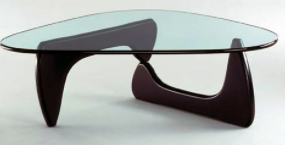
Image source: https://search.creativecommons.org/photos/b951d5d6-1403-4263-bfa6-ad842cd30a93 by lartnouveauenfrance
Sculpture and Design
The sculptor and designer Isamu Noguchi himself described the Coffee Table as his best furniture design surely because it is reminiscent of his biomorphic sculptures in bronze and marble from the same period, translating the typical forms of the latter into a piece of sculptural furniture. Two wooden leg elements, which are available in black ash, maple or walnut, are positioned at a right angle to provide a stable support for the heavy, sturdy glass top.
History
The Noguchi table was an evolution of a rosewood and glass table Noguchi designed in 1939 for A. Conger Goodyear, president of the Museum of Modern Art. The design team at Herman Miller was so impressed by the table’s use of biomorphism that they recruited Noguchi to design a similar table with a freeform sculptural base and biomorphic glass top for use in both residential and office environments.
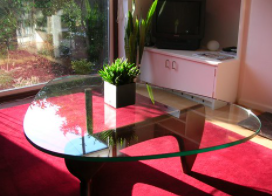
Image source: https://search.creativecommons.org/photos/a4da700f-587d-4bed-842e-a344422cc363 by tristanf
The 1947 Herman Miller catalogue described the Noguchi coffee table as “sculpture-for-use” and “design for production”. The base was carved from solid walnut, and consisted of two identical parts; when one part “is reversed and connected to the other by a pivot rod, a base appears which has a smoothly flowing form and an interest rarely found in furniture of any period”. The shape of the two wooden supports produces a self-supporting and stable base, allowing the heavy plate glass top to be placed without the use of connectors.
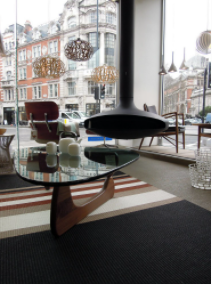
Image source: https://search.creativecommons.org/photos/3ffab068-e1be-4e68-bdb0-35ebb128fb15 by sergejf
The Noguchi table became one of Herman Miller’s most iconic and successful designs. Production ceased in 1973, and the piece became an instant collectible. Herman Miller reissued it in 1980 in a limited edition of about 480 tables. The table was reintroduced again in 1984 for the “Herman Miller Classics” line, and has been in production ever since.
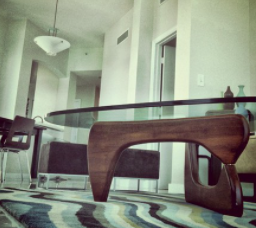
Image source:https://search.creativecommons.org/photos/d3ceb005-5d1f-41c2-8046-ca9dcb082bfa by miamism
Isamu Noguchi, Designer
Sculptor, painter, ceramicist and furniture and lighting designer, Isamu Noguchi was one of the most prolific and protean creative forces of the 20th century and a key figure in the development of organic modernism. Noguchi’s sculptures and designs share a common spirit: one of lyrical abstraction, tempo and flow and harmonious balance.
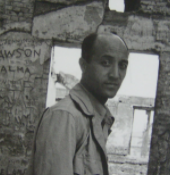
Image source: https://search.creativecommons.org/photos/f809a6e7-cb53-400a-bd46-2b84583a8f7b by Michael Francis McCarthy
Noguchi was born in Los Angeles to an American mother and Japanese father, and spent most of his childhood in Japan. He returned to the United States at age 13, went to high school in Indiana and enrolled at Columbia University to study medicine. At the same time, he took night courses in sculpture. Within three months, he left college to pursue art. Noguchi was awarded a Guggenheim Fellowship in 1927 and traveled to Paris to work under Constantin Brancusi. It marked a turning point. Inspired by Brancusi, Noguchi embraced abstraction and began to sculpt in the expressive, rhythmic style that would be the hallmark of his work.

Image source: https://en.wikipedia.org/wiki/Isamu_Noguchi#/media/File:Isamu_Noguchi.jpg
Once back in New York, Noguchi was introduced to design by what would become a lifelong collaboration creating sets for choreographer Martha Graham. His first industrial designs were in Bakelite: a sleek clock-timer created circa 1932, and his famed Zenith Radio Nurse intercom, from 1937. Ten years later, Herman Miller introduced Noguchi’s now-iconic glass-topped coffee table with an articulated wooden base. His washi paper and bamboo Akari Light Sculptures, handmade in Japan, debuted in 1951. In the late 1950s, Noguchi designed for Knoll, creating such pieces as his dynamic Cyclone table and rocking stool. For collectors, Noguchi’s furniture and light designs remain his most accessible work. As you will see on these pages, they have the same power and presence that Noguchi brought to his art.
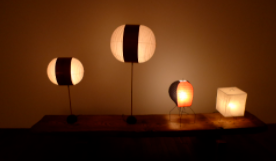
Image source: https://search.creativecommons.org/photos/49948cc6-be81-4258-936f-8573428f7cfd by focusc
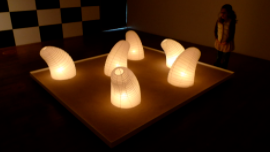
Image source: https://search.creativecommons.org/photos/02b3d6d2-b4ce-4a42-bf7b-984d0ad2361f by focusc
Data sheet
Designer: Isamu Noguchi
Year: 1944
Manufacturer: Herman Miller
Materials: Glass for the top and Mapple or wallnut or black ash for the legs
Dimensions:
- Height 40 cm
- Width 91 cm
- Depth 127 cm
Finishes:
- Table top: heavy glass, 19 mm, rounded edges.
- Base: solid wood with lacquer finish, rounded edges.
Info sources:
https://www.vitra.com/en-it/living/product/details/coffee-table
